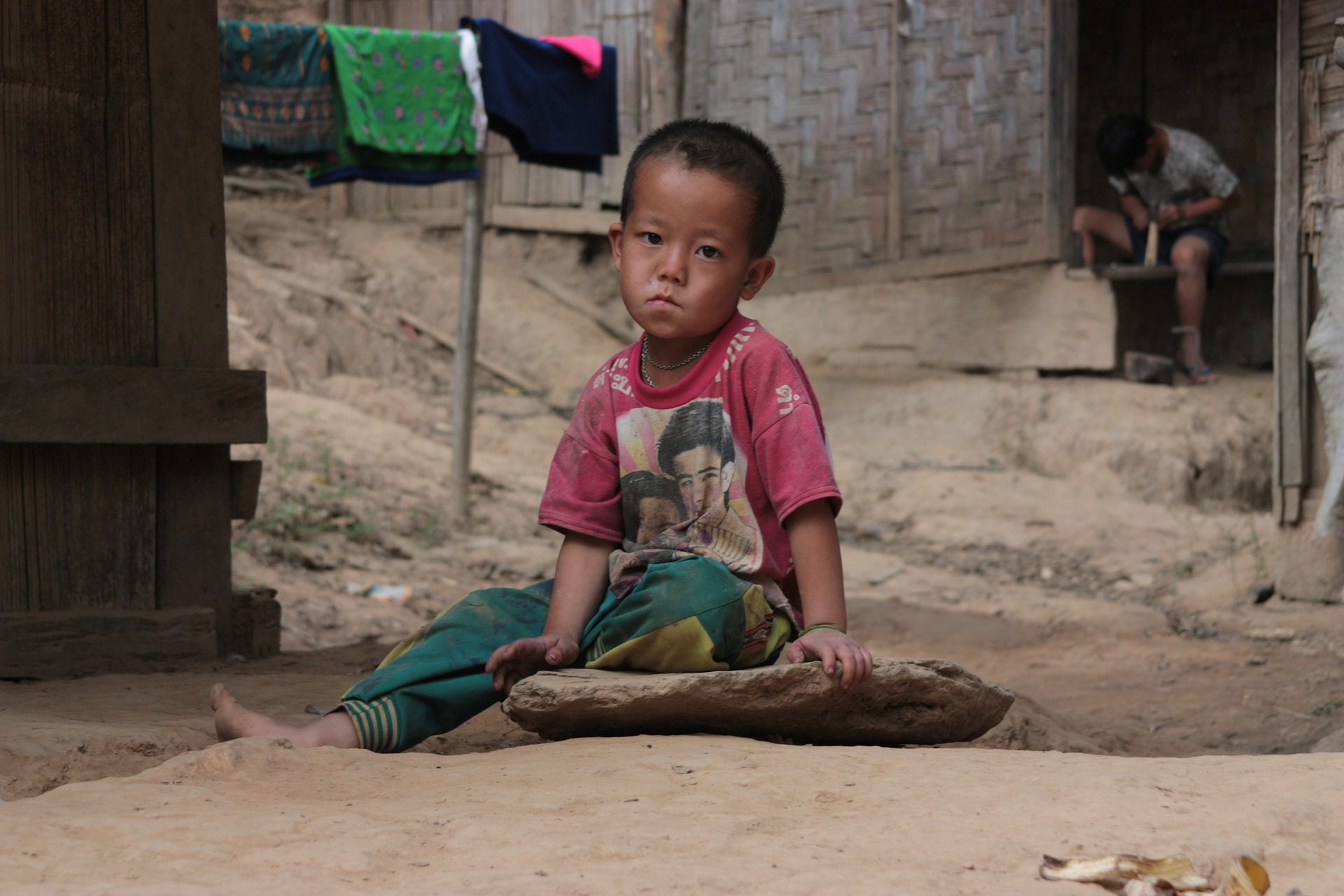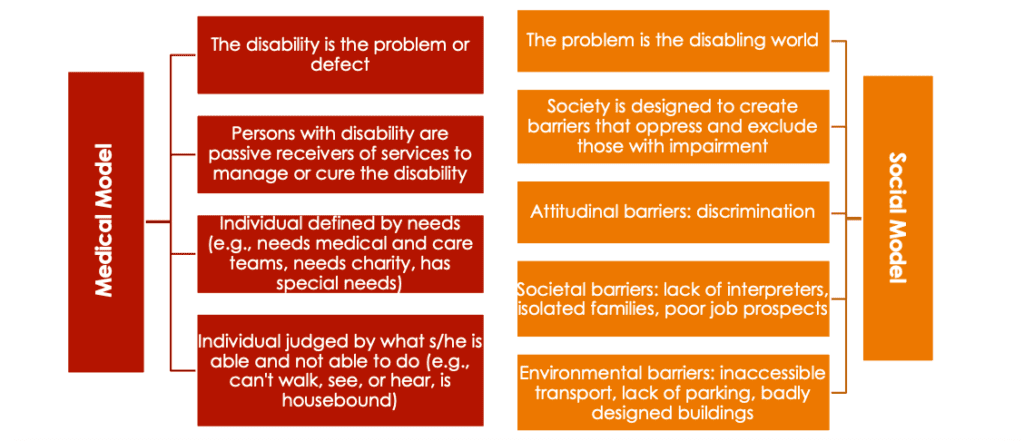Overview
A large number of children living with disabilities are living in developing regions (1). This is very important here at Poverty Child as many of these children are living on the street. This is a large public health concern, as disability in street children can greatly impact children’s physical and mental health.
Street children and poverty
Work at Poverty Child aims to improve the lives and outcomes of children living and working on the street. The term ‘Street Children’ is used to describe either children who live and work on the streets, or those who spend a a lot of time on the street but sleep away from public spaces (2).
Poverty is a main cause of children having to live on the street. Other causes include the death of family members, neglect or violence. Poverty is also a main cause of disability, where the cost of healthcare prevents many people from being able to access vital services (3). Disability can increase the probability of being in poverty, as it prevents many from being able to work. In addition, many children receive poorer education as a result of disability. To clarify, disability and poverty are closely linked, as both impact on the lives of street children. Disability in street children adds an additional hardship. For example, street children living with disabilities are more vulnerable to violence and typically have poorer health (2).
Furthermore, disabled street children are often ignored and they try to remain hidden as a result of the high levels of discrimination they experience (2). Work in Sierra Leone by Street Child has shown that discrimination is one of the biggest factors contributing to poor education for children living with disabilities (4).
In addition, the current Coronavirus pandemic has also had a large impact on street children living with disabilities (5). This has made it harder for them to access food or help. Currently, there is a need to remotely support children with disabilities due to Coronavirus.
Causes of disability in street children
There are a large number of factors which can cause disability in children (1). However, many of these have been tackled in higher income countries. Yet, many preventable diseases are continuing to cause disability in children of low-income settings (1). For example, disability may be caused by infectious diseases, infections by parasites and diseases not directly spread from person to person (1). In addition, in poor regions and street children especially, factors such as malnutrition, maternal and perinatal disease and social unrest are also common causes (3).
Types of disability
A person with a disability has a long term physical, mental, intellectual or sensory impairment (6). Research from Street Child suggests that more street children have intellectual disabilities than physical ones. For example, this may include learning and social impairments. Subsequently, this can affect their education (7).
Models of disability
The social model of disability highlights the discrimination a person may face due to their disability (6). This stigma has existed for a long time, and remains an issue around the world. To add further, there is often a view that disability is the ‘fault’ of the person. Instead, society needs to be fully inclusive of people living with disability (8). In comparison, the medical model of disability more directly focuses on changes to the physical or mental abilities of a person (6).
Discrimination in disabled children
Children living with disability experience stigma and discrimination, on top of the difficulties caused by the disability itself (9). Discrimination is described by UNICEF as ‘any distinction, exclusion or restriction on the basis of disability’ (6). This causes many children to feel isolated and helpless (9).
Discrimination in education
Disability often prevents children from fully taking part in their community. As a result, this causes many to feel like outsiders within their own communities (8). For example, it is common for children with disabilities to be separated in classrooms. Some teachers will refuse to teach children with disabilities alongside other children (8). This continues to make those with disabilities believe there is something wrong with them. Furthermore, it also suggests to able-bodied children that the two groups need to be separated. This results in poorer education for disabled children. Many children begin to feel this stigma towards themselves, which results in them not wanting to seek help or access to health services. This further adds to the struggle of living with disability as a child. Furthermore, they have been left behind in the global attempt to improve education for street children as a whole (10).
Gender-based discrimination
Gender-based discrimination is also experienced by girls living with disabilities. Consequently, they overall receive less education and less career training than boys with disabilities and able-bodied girls of the same age (11). This exclusion is commonly as a result of them being invisible. Therefore, it is important that we work to include disabled girls within and out-with disabled communities (11).
Developments to disability in street children
Many organisations are working to improve the health and lives of children living in low income countries (1). In particular, programmes are working to improve the outcomes of disability in street children. For example, community-based programmes are being used to emphasise the importance of good health care for disabled children. The introduction of such programmes has helped improve childhood access to healthcare in Tanzania. This is a country currently struggling with high rates or childhood disability (1).
The United Nations Sustainable Development Goals for 2030 hope to make education more inclusive and more accessible to all children (10). However, there is a lack of research on the education of disabled children, particularly in those living on the streets (9). This is due to a lack of funding. As a result, this limits the improvements which can be made to the education of disabled street children. One way to solve this is through fundraising campaigns. These campaigns are increasing awareness and therefore support for projects. Subsequently, this increase in funding is helping to meet the needs of every child living with disability.
In addition, there is a mindset that we need to ‘fix’ children living with disabilities. This implies that something is wrong with them. Instead, it is better if we work to remove the stigma the children face. This would result in children being free to succeed no matter their impairment (8). For instance, UNICEF’s ‘Its about ability’ campaign is aimed at changing community perception of disability, which is helping to improve the acceptance and inclusion of disabled children (8).
Coronavirus
Sadly, the global pandemic had a negative impact on much of the progress being made. However, organisations such as Chance For Childhood have done great work to meet the needs of disabled street children through outreach teams during this difficult time. The result: much improved support of street children in Kenya and Ghana (5).
Overall, these programmes can collectively help us to improve disability in street children.
References
- Cameron D, Nixon S, Parnes P, Pidsadny M. Children with disabilities in low-income countries. Paediatrics & Child Health [Internet]. 2005 [cited 25 April 2021];10(5):269-272. Available from: https://www.ncbi.nlm.nih.gov/pmc/articles/PMC2722543/
- org. The Facts about Street Children | Consortium for Street Children [Internet]. Consortium for Street Children. 2019 [cited 5 May 2021]. Available from: https://www.streetchildren.org/about-street-children/
- Simkiss D, Blackburn C, Mukoro F, Read J, Spencer N. Childhood disability and socio-economic circumstances in low and middle income countries: systematic review. BMC Pediatrics [Internet]. 2011 [cited 25 April 2021];11(1). Available from: https://bmcpediatr.biomedcentral.com/articles/10.1186/1471-2431-11-119
- Weimert F. Discrimination is the biggest obstacle to education for children with disabilities — Street Child Switzerland [Internet]. Street Child Switzerland. 2018 [cited 5 May 2021]. Available from: https://www.street-child.ch/news/discrimination-education-children-with-disabilities
- Chance For Childhood. How we’re supporting vulnerable children during Coronavirus | Chance for Childhood – Children’s charity [Internet]. Chance for Childhood. 2020 [cited 5 May 2021]. Available from: https://chanceforchildhood.org/latest-news/how-were-supporting-vulnerable-children-during-coronavirus/
- Desk Review for Developing Measures on Discriminatory Attitudes and Social Norms towards Children with Disabilities in Europe and Central Asia region [Internet]. Dornsfife: UNICEF; 2018. Available from: https://www.unicef.org/eca/media/13391/file
- Kamara J. A Study on the Barriers to Education for Children with Disabilities in Sierra Leone [Internet]. Chicago: Street Child; 2018. Available from: https://static1.squarespace.com/static/5620ddc4e4b04789570e5fca/t/5b570243aa4a997ca1cf356b/1532428909558/A%2BStudy%2Bon%2Bthe%2B%2BBarriers%2Bto%2BEducation%2Bfor%2BChildren%2Bwith%2BDisabilities%2Bin%2BSierra%2BLeone%2B.pdf
- Children with disabilities [Internet]. Unicef.org. 2021 [cited 25 April 2021]. Available from: https://www.unicef.org/eca/children-disabilities
- Maulik P, Darmstadt G. Childhood Disability in Low- and Middle-Income Countries: Overview of Screening, Prevention, Services, Legislation, and Epidemiology. PEDIATRICS [Internet]. 2007 [cited 25 April 2021];120(Supplement):S1-S55. Available from: https://pediatrics.aappublications.org/content/pediatrics/120/Supplement_1/S1.full.pdf
- The World Bank. Education: Children with disabilities are being left behind, says World Bank/GPE report [Internet]. 2017. Available from: https://www.worldbank.org/en/news/press-release/2017/12/01/children-with-disabilities-are-being-left-behind
- The State of the World’s Children 2013 [Internet]. Unicef.org. 2013 [cited 25 April 2021]. Available from: https://www.unicef.org/reports/state-worlds-children-2013


